MaxJax Portable Vehicle Lift
Anybody who has spent any amount of time working on cars knows that jacks and jackstands suck. Aside from the boys at Lingenfelter, who the last time I was there still did all their work on the floor, the biggest difference between a pro and a hobbiest was the use of a vehicle lift. With a lift, you can put the car up in the air where you can work on it properly in a few seconds.
When the wife got back from her tour in Africa, she bought me a present - a MaxJax portable lift
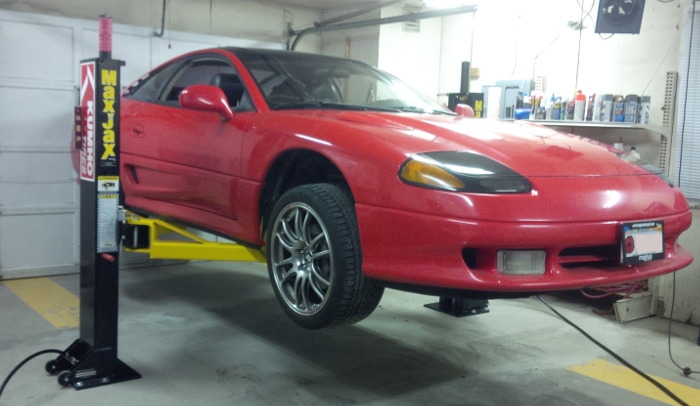
This thing is suprisingly affordable and absolutely does the business. It doesn't go as high as a commecial lift, but aside from one little safety feature, it is every bit as capable as a full-on commecial lift.
It uses anchors drilled into your floor, and the power pack is on a little wheeled cart. To use it, bolt it to the floor, plug in the hydraulic lines (that connect with quick disconnects), plug the cart into 110V, and up you go! I leave the uprights bolted down, but I usually unhook the power cart and wheel it out of the way.
Life is just SO MUCH BETTER when you have a lift. No more futzing around with jackstands. I did a catback exhaust remove and install in an hour, starting from when I drove the car in the shop, and ending when it drove out. It is AWESOME!
My only complaint is that one safety feature...
When you lift a car on an commercial lift, you hear a series of "clanks" as it goes up. Inside the uprights, commercial lifts have a series of teeth and pawls that engage as the car lifts - those clanks are the pawls running up the teeth. The idea is that if the lift suddenly loses hydraulic pressure, the pawls catch the car before it can fall any distance. To lower the car, you have to raise it up off a pawl, then hold down a "pawl retractor" that moves the pawls out of the way before you can bleed down the pressure and lower the car.
The MaxJax does not have that. Instead, it has a pair of safety bars that are manually inserted into holes in the uprights. When you get the lift in place, you slide in the safety bars and lower the lift until it rests on the bars.

That's all and good, but it means that if you lose hydraulic pressure when raising or lowering the lift, it will fall to the next safety bar location - assuming you have the bars in place. And because the lift uses two cylinders - one per upright - losing one cylinder will drop just that one side.
By all rights, this should never happen - but I do wish it had safety pawls all the way up, because lifting it freeform is a little nerve-wracking until the safety bars are put in. And it should go without saying that the lift should NEVER be used without the safety bars in place!
The other PITA wasn't MaxJax's fault. The spec for their anchors is 4" of concrete. My shop floor was 3.75". The anchors wouldn't hold. So I had to cut out a section of the floor and recast it thicker.
Step #1 was marking the pad and cutting the outline with a concrete saw. The hanging curtain was an attempt to confine the dust from the saw. That attempt was a miserable failure and everything got coated with a fine layer of concrete dust. I was dusting parts for months.
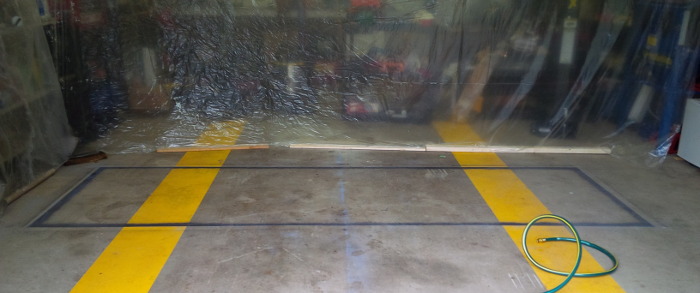
Next was breaking up the existing concrete. I started with a sledgehammer, but quickly switched to a power breaker. As it turns out, reinforced concrete is really impact resistant.
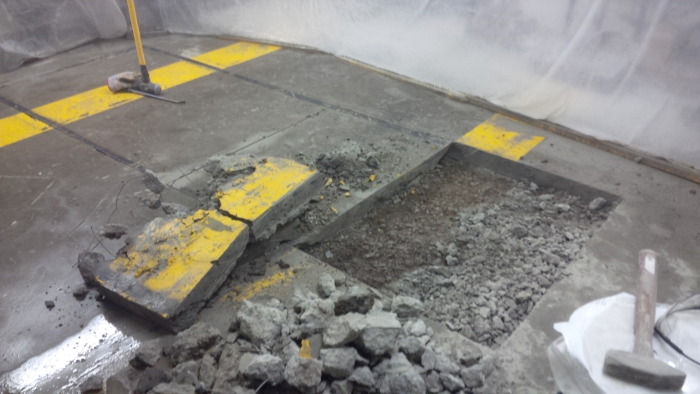
With the concrete broken up, excavation started:
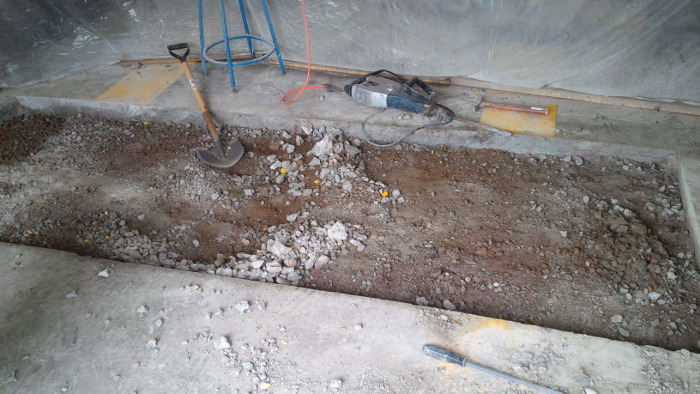
Until finally my template fit all the way across.
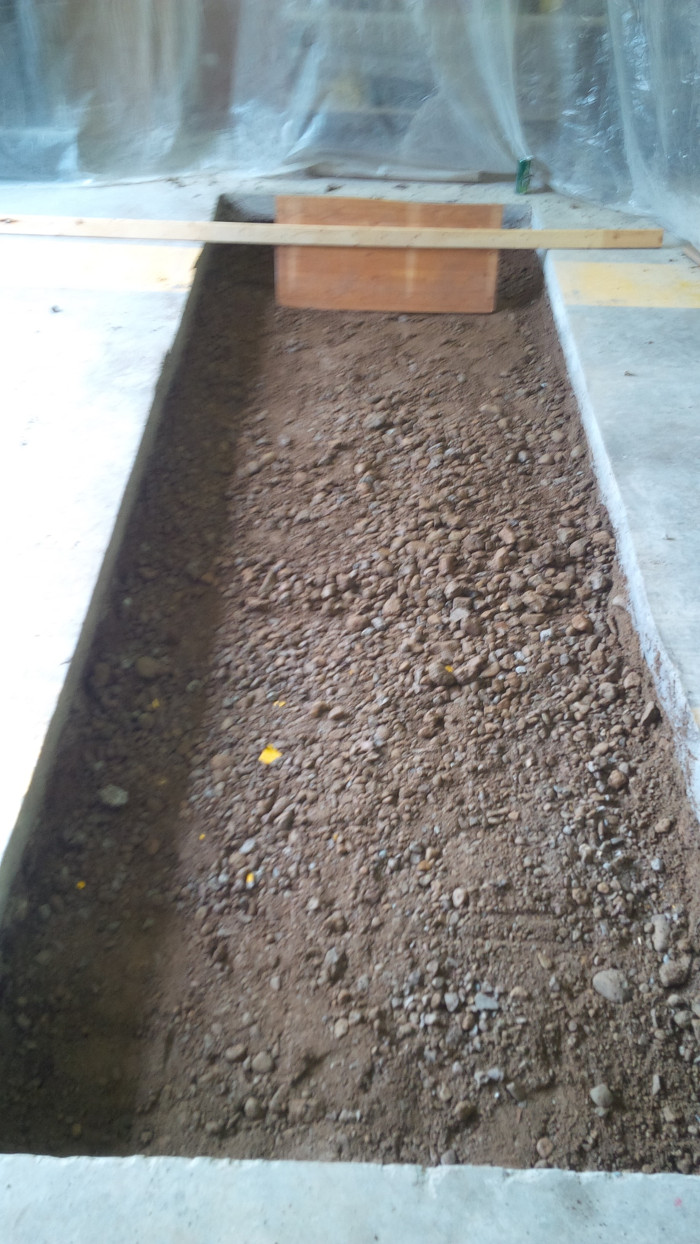
Next was rebar. I chose not to drill and epoxy the rebar into the old pad, as the old pad was too thin. Instead, I extended the rebar a foot under the old pad and undercut the old pad slightly so the new concrete would key in.
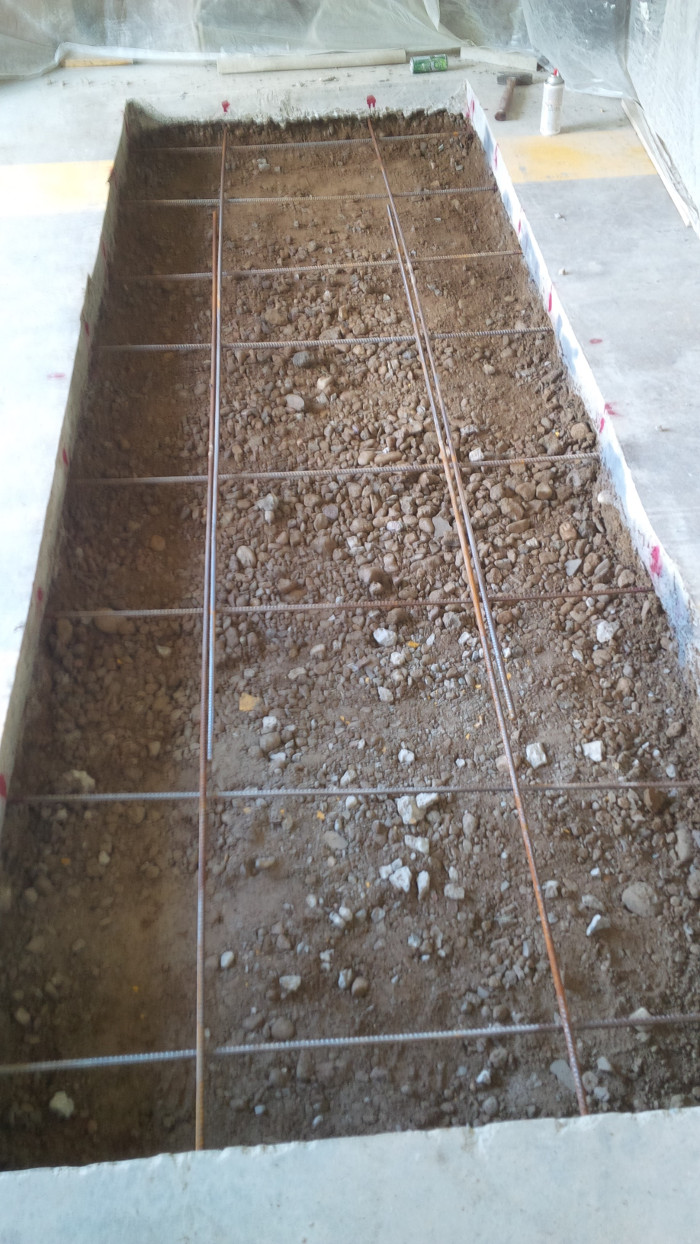
I marked the rebar locations so I could avoid it once it was time to drill anchors.
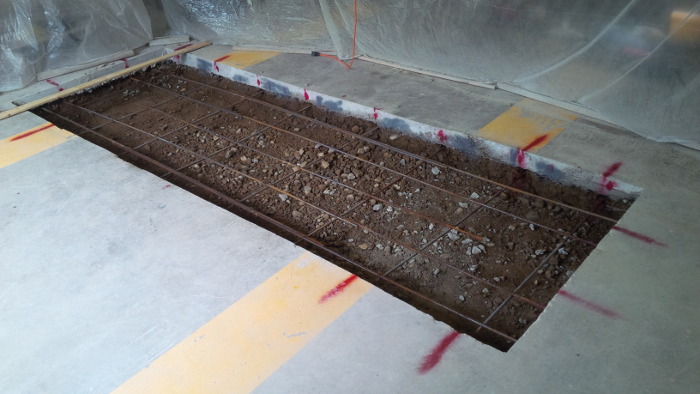
One load of concrete and some power trowlling later, I had a pad curing.
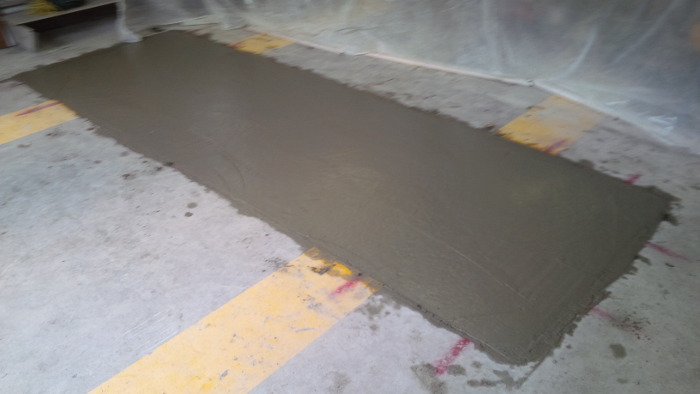
One month later, with the pad fully cured, I bought a Bosch hammer drill and set the anchors. I used the mechanical anchors that came with the lift and they worked fine. That drill has also come in handy for other projects, so it was worth buying.

and we are ready to get to work!

